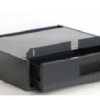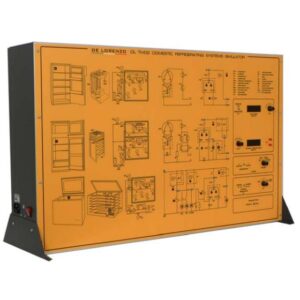TRAINING OBJECTIVES
It is possible to simulate the behaviour of components and systems, on the basis of the operating conditions which can be monitored directly on the panel or through Personal Computer by teacher and students.
The Personal Computer constantly keeps under control the simulation in progress and displays its behaviour through analog and digital signals and meters; in this way the student, through measurements and tests, can go on with the troubleshooting.
TECHNICAL DESCRIPTION
The single temperature domestic refrigerator is composed of the following main elements:
• Hermetic compressor with thermal protection and intensity relay without starting condenser
• Static condenser
• Capillary pipe for refrigerating fluid expansion
• Natural air circulation static evaporator
• Regulation thermostat
• Refrigerating fluid temperature/pressure test‐points
• Possibility to simulate and test both the version for temperate climate and the version for tropical climate
The two temperatures domestic refrigerator is composed of the following main elements:
• Hermetic compressor with thermal protection and intensity relay with starting condenser
• Static condenser
• Capillary pipe for refrigerating fluid expansion
• Natural air circulation static evaporator for refrigerator
• Constant pressure valve
• Natural air circulation static evaporator and electrical defrosting resistance, for freezer
• Double regulation thermostat for refrigerator/freezer
• Refrigerating fluid temperature/pressure test‐points
• Possibility to simulate and test both the 1, 2 and 3 star freezer and the 4 star freezer
• Possibility to simulate and test both the version for temperate climate and the version for tropical climate
DOMESTIC REFRIGERATING SYSTEMS
The simulator allows the study, the performing of experiments and the troubleshooting for the following systems:
• Single temperature domestic refrigerator
• Two temperatures domestic refrigerator
• Domestic freezer
These systems are reproduced on the panel, through a colour representation which allows a complete analysis of the fluid circuit, of its components and of the electrical/electronic circuit for control and regulation.

















